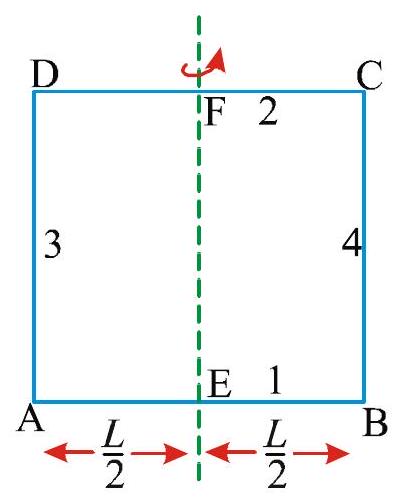269627 Two rings of the same radius \(R\) and mass \(M\) are placed such that their centres coincide and their planes are perpendicular to each other. The moment of inertia of the system about an axis passing through the common centre and perpendicular to the plane of one of the rings is
269630
Two circular loops \(A\) and \(B\) are made of the same wire and their radii are in the ratio \(1: n\).
Their moments of inertia about the axis passing through the centre and perpendicular to their planes are in the ratio \(1: \mathrm{m}\). The relation between \(m\) and \(n\) is
269627 Two rings of the same radius \(R\) and mass \(M\) are placed such that their centres coincide and their planes are perpendicular to each other. The moment of inertia of the system about an axis passing through the common centre and perpendicular to the plane of one of the rings is
269630
Two circular loops \(A\) and \(B\) are made of the same wire and their radii are in the ratio \(1: n\).
Their moments of inertia about the axis passing through the centre and perpendicular to their planes are in the ratio \(1: \mathrm{m}\). The relation between \(m\) and \(n\) is
269627 Two rings of the same radius \(R\) and mass \(M\) are placed such that their centres coincide and their planes are perpendicular to each other. The moment of inertia of the system about an axis passing through the common centre and perpendicular to the plane of one of the rings is
269630
Two circular loops \(A\) and \(B\) are made of the same wire and their radii are in the ratio \(1: n\).
Their moments of inertia about the axis passing through the centre and perpendicular to their planes are in the ratio \(1: \mathrm{m}\). The relation between \(m\) and \(n\) is
269627 Two rings of the same radius \(R\) and mass \(M\) are placed such that their centres coincide and their planes are perpendicular to each other. The moment of inertia of the system about an axis passing through the common centre and perpendicular to the plane of one of the rings is
269630
Two circular loops \(A\) and \(B\) are made of the same wire and their radii are in the ratio \(1: n\).
Their moments of inertia about the axis passing through the centre and perpendicular to their planes are in the ratio \(1: \mathrm{m}\). The relation between \(m\) and \(n\) is
